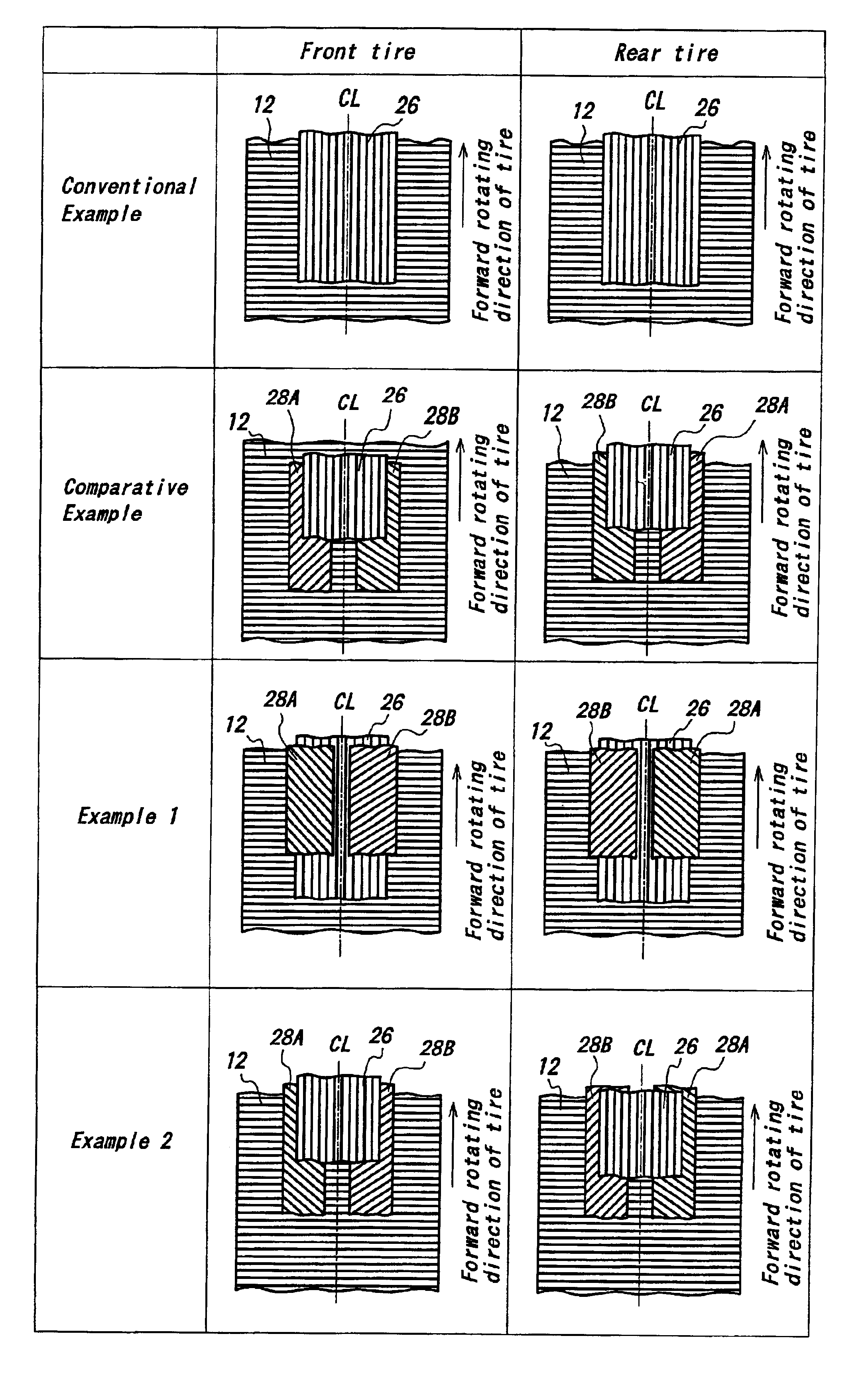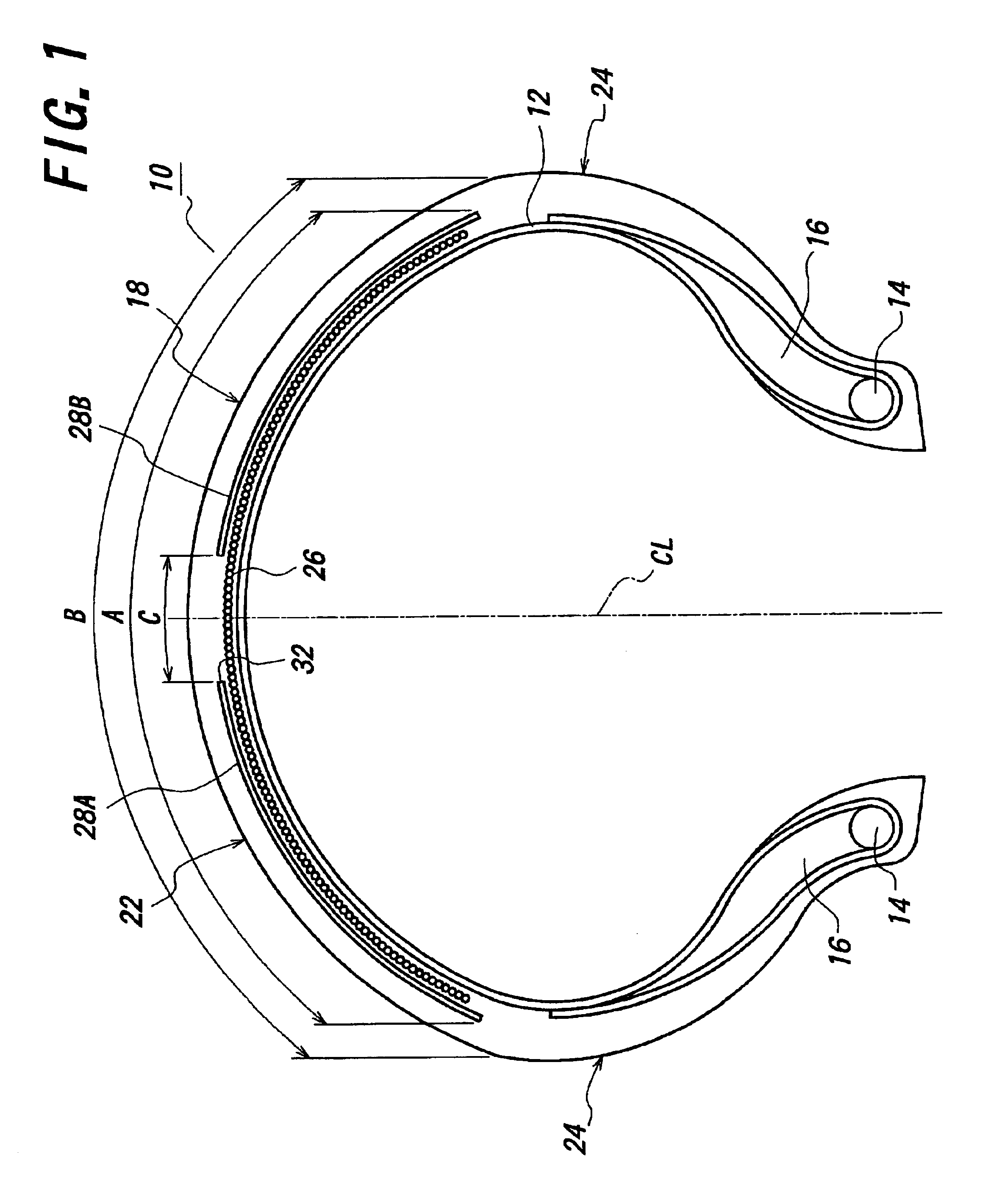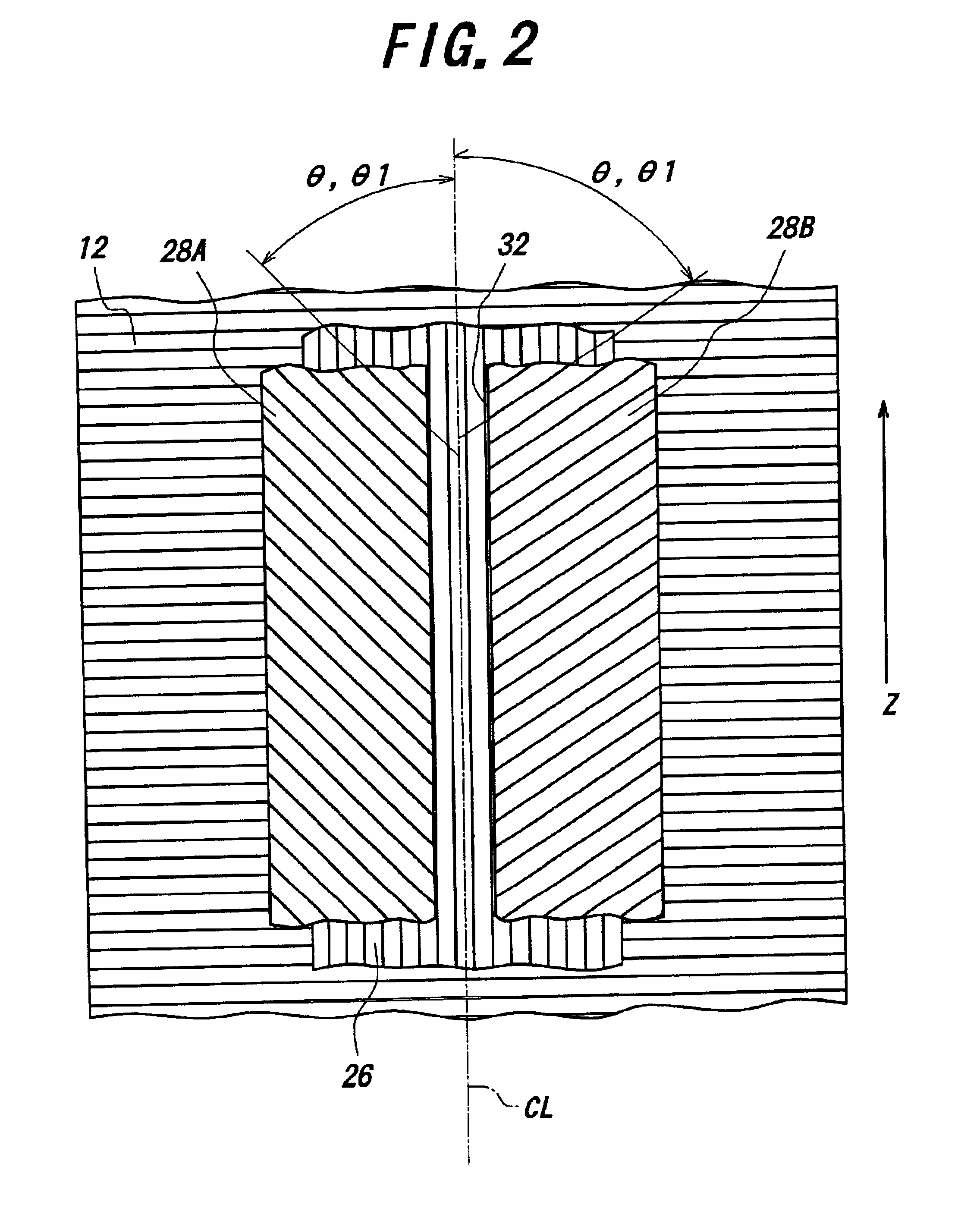Method of mounting a pneumatic radial tire
a radial tire and pneumatic technology, applied in the field of pneumatic radial tires, can solve the problems of insufficient balance of rigidity, ground contact property and generation of lateral force in the tire, convergence of vibration behavior in the vehicle body, etc., and achieve the effect of reducing rigidity and reducing ride comfor
- Summary
- Abstract
- Description
- Claims
- Application Information
AI Technical Summary
Benefits of technology
Problems solved by technology
Method used
Image
Examples
Embodiment Construction
[0032]A first embodiment of the pneumatic radial tire according to the invention is described with reference to FIGS. 1 to 3.
[0033]In FIG. 1 is shown a motorcycle tire 10 of radial structure as the first embodiment of the pneumatic radial tire according to the invention. A carcass 12 constituting a skeleton of the tire 10 is formed by a plurality of plies (not shown) each containing cords such as polyester cord or the like arranged in a direction crossing with an equatorial plane CL of the tire 10.
[0034]A pair of bead cores 14 each formed by winding and bundling steel wires in a ring shape are arranged in the vicinity of both end portions of the carcass 12, and both the end portions of the carcass 12 are wound around these bead cores 14, respectively. Furthermore, a tapered bead filler 16 made of a hard rubber is embedded between the carcass 12 and a turnup portion thereof above the bead core 14.
[0035]As mentioned above, the carcass 12 is extended between the pair of the bead cores ...
PUM
| Property | Measurement | Unit |
|---|---|---|
| width | aaaaa | aaaaa |
| angle | aaaaa | aaaaa |
| width | aaaaa | aaaaa |
Abstract
Description
Claims
Application Information
 Login to View More
Login to View More - R&D Engineer
- R&D Manager
- IP Professional
- Industry Leading Data Capabilities
- Powerful AI technology
- Patent DNA Extraction
Browse by: Latest US Patents, China's latest patents, Technical Efficacy Thesaurus, Application Domain, Technology Topic, Popular Technical Reports.
© 2024 PatSnap. All rights reserved.Legal|Privacy policy|Modern Slavery Act Transparency Statement|Sitemap|About US| Contact US: help@patsnap.com










